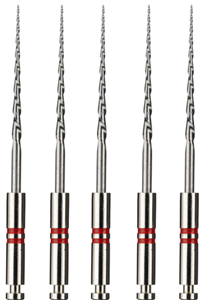
What are the pros and cons of a root canal? Why root canals are performed and how they work? What causes the need for a root canal? What should one expect after a root canal?
A root canal is a dental procedure to fix a tooth that cannot be filled or restored any other way. Your regular dentist might do the root canal ,. The pulp is made up of nerves, connective tissue, and blood vessels that help the tooth grow. In the majority of cases, a general dentist or endodontist will perform a root canal while you’re under local anesthesia.
During a root canal procedure, the nerve and pulp are removed and the inside of the tooth is cleaned and sealed. Without treatment, the tissue surrounding the tooth will become infected and abscesses may form. When one undergoes a root canal , the inflamed or infected pulp is removed and the inside of the tooth is carefully cleaned and disinfecte then filled and sealed.
This can occur because of a crack or break in the tooth , dental decay , or another type of injury to your tooth. You might notice some warning signs of inflamed and infected teeth,. What’s involved in a root canal therapy. Most of the people who head into a root canal , are undergoing a dental surgery for the first time. Root canal can be a very daunting experience.
If you look at popular wisdom or go through online forums, most people will give you a generic blanket statement that root canals are painful. The procedure involves removing the damaged area of the tooth (the pulp), cleaning and disinfecting it and then filling and sealing it. With a filling, the upper part of the tooth (crown) is filled. With a root canal, the lower part (root) of the tooth is filled. Your tooth will be numbe the infected part of the tooth will be remove and your tooth will be filled.
The causes could be deep tooth decay, repeated dental procedures on one tooth (replacing a large filling, for example), or traumatic damage such as a crack,. Gutta percha is a rubber material designed to seal the inside of the tooth. Your dentist will remove any remaining decay from the tooth and will decide to either put a temporary filling on to close the tooth or proceed with placing a permanent filling. If your root canal is performed by an endodontist,.
The dental pulp is a soft substance in the center of the tooth that consists of the nerve, blood vessels, and connective tissue. The pulp chamber is the hollow part in the center of the tooth that contains the pulp,. If the molar root canal is performed over a number of visits, temporary fillings will be done.
A small amount of antibiotic may be inserted in the canal to prevent further infection. When you think of a root canal , you probably associate the procedure with adults. In some cases, however, children can also benefit from a root canal. Although dreade anesthesia ensures patients can undergo a root canal without pain. Read about the factors that influence the cost of a root canal and what to expect during recovery.
Having a crown fitted to the tooth after root canal treatment is important for improving tooth survival rates.
No comments:
Post a Comment
Note: Only a member of this blog may post a comment.